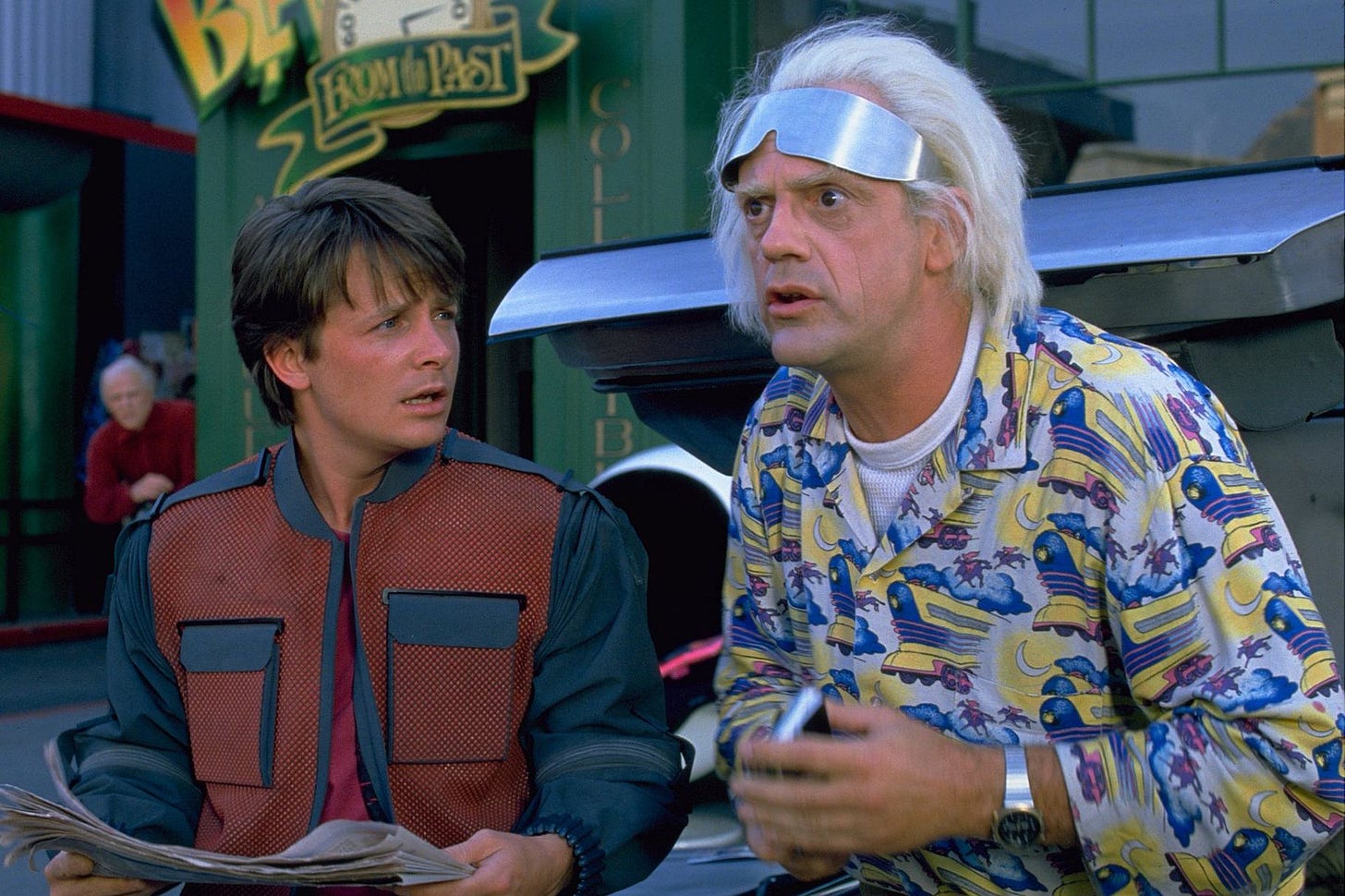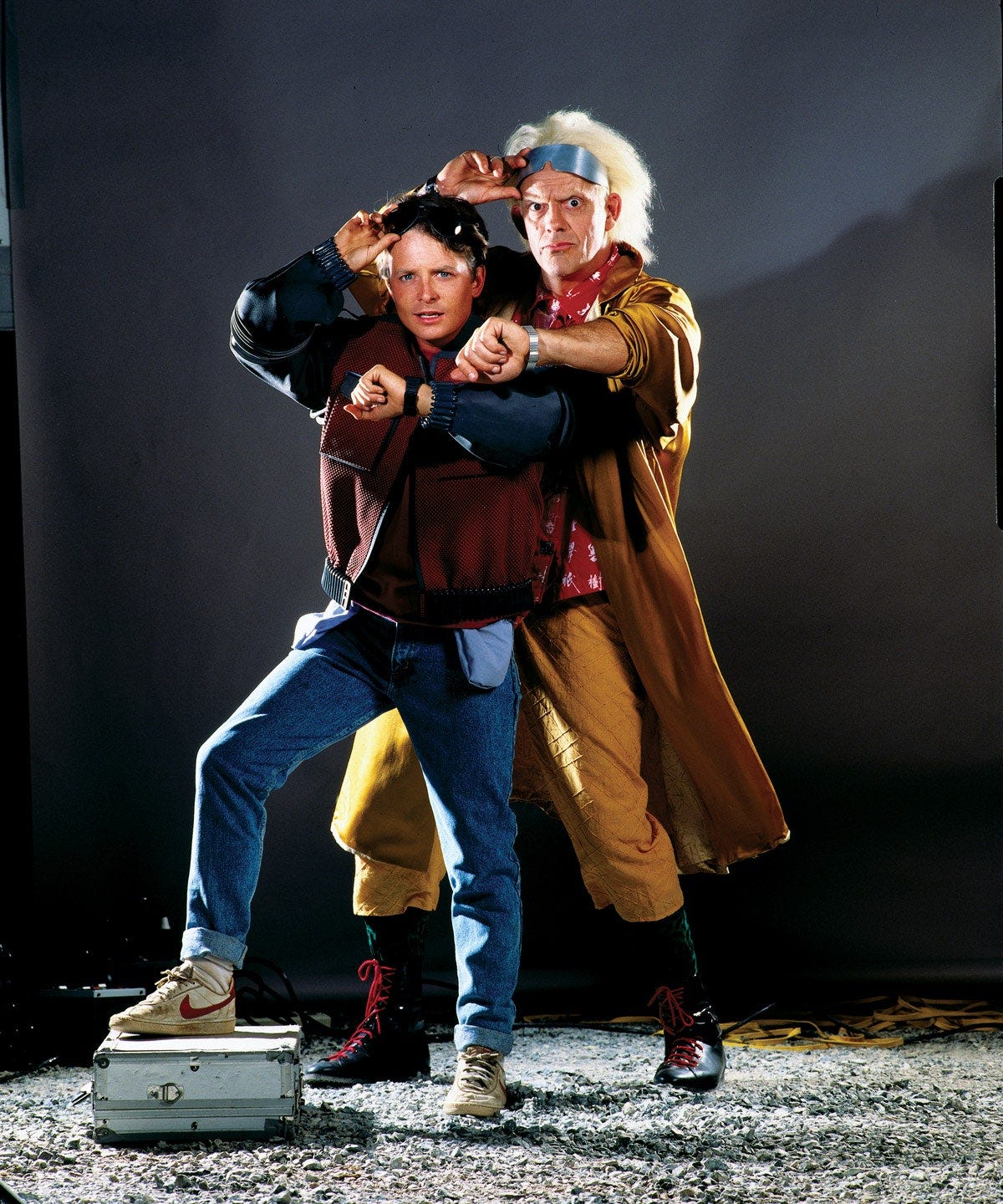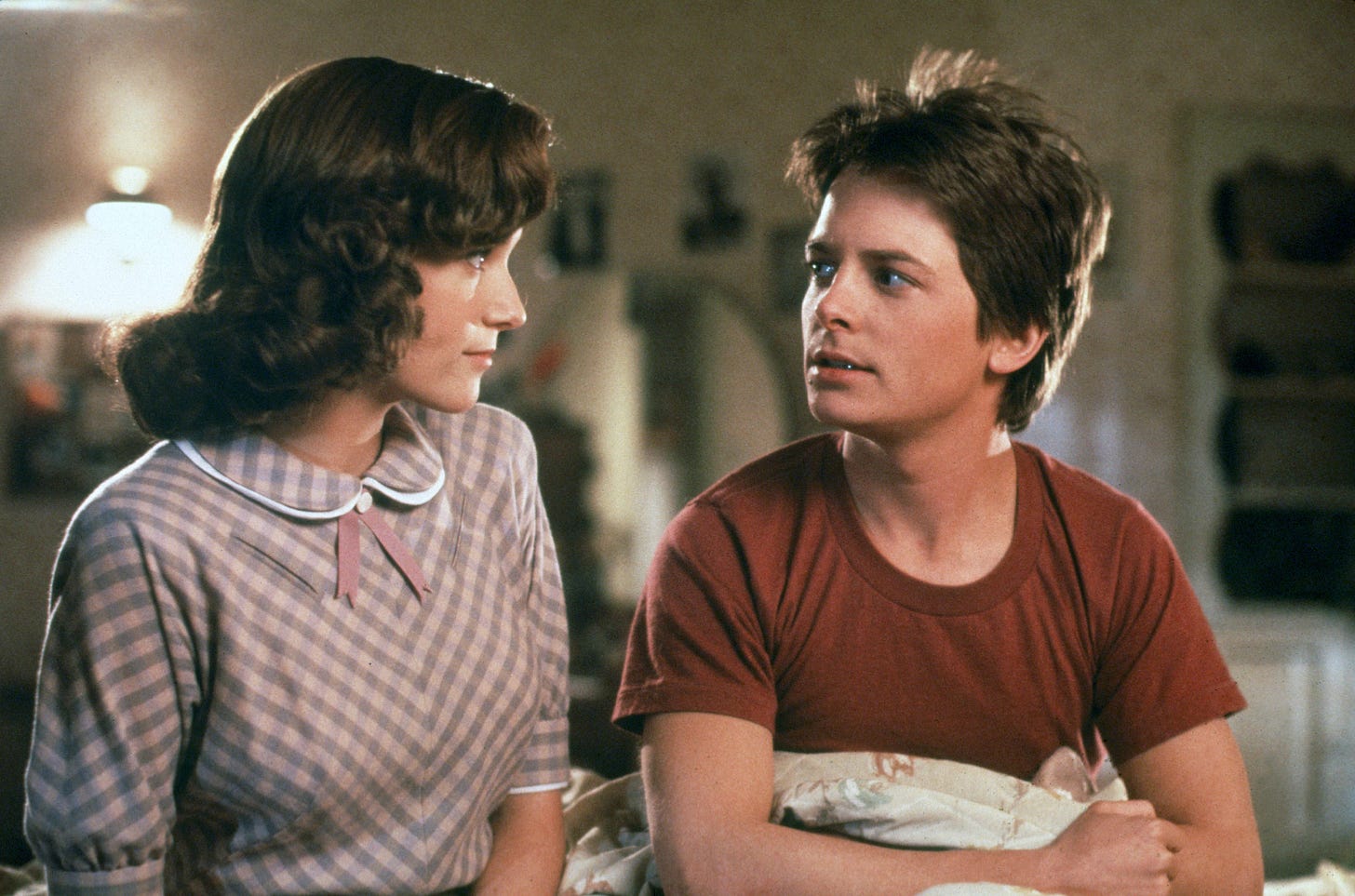
Bob Gale and Robert Zemeckis knew better.
The Back to the Future co-creators knew that their purposely bombast vision of 2015 in 1989’s Back to the Future Part II, was always going to be something of a gamble (even if some of their predictions weren’t that far off-base, believe it or not).
Speaking to Vanity Fair in 2015, Gale acknowledged as much.
But when you’re making a time travel movie, one set in the (then) somewhat distant future too, why not have some fun with it?
They absolutely did, as ridiculous as a potential Jaws 19 is now as it was then.
And for all the influence the sc-fi/adventure trilogy continues to have as a whole, there is something about 2015 Hill Valley that endures, regardless of the brief time we spend there.
The time period is a relative outlier in the films but it was a big deal as the real-world date shown in Part II, October 21st, 2015, arrived.
Retrospectives abounded, the two leads, Michael J. Fox and Christopher Lloyd did the rounds, joyfully reprising their roles on the talk show circuit and the trilogy returned to theatres for the first time in decades.
As someone who, thanks to his parents, absolutely adored these movies growing up (and still knows them front-to-back), it was all… well, pretty heavy (I even tweeted about it!)
But Part II is also, as a by-product of the future-set shenanigans, the weirdest and most pure science fiction movie in the trilogy.
The 1985 original, from the way it is written, presented and executed is a near-perfect example of movie storytelling.
After his inventor friend, Emmett “Doc” Brown (Lloyd) turns a DeLorean sports car into a time machine, high-schooler Marty McFly (Fox) accidentally activates it and finds himself stuck in 1955.
After meeting his now same-aged parents (Lea Thompson and Crispin Glover) and jeopardizing the timeline, he must ensure his own existence while working, with the help of a younger Doc, to return home.
The sequels spun out from this in their own interesting ways but while Part III, like the original, features a very intimate and self-contained narrative, Part II, in contrast, fully commits to the broader concept.
There are branching timelines, alternate-selves and commentary on the dangers inherently involved with time travel, especially if you’re careless or using it for the wrong reasons.
Not revolutionary ideas on their own necessarily but in bringing them to the screen with such earnestness, Gale (as writer) and Zemeckis (as director) set a genre template that continues to be the benchmark, referenced and riffed on in modern blockbusters from Avengers: Endgame to The Flash.
Entertaining? Oh, for sure. Perfect? No. Not for me, at least.
For as much fun as people have had with the 2015 portion of the movie over the years, it remains, for my money, the weakest part of the whole experience, only there to set the rest of the plot in motion.
And again, while the filmmakers knowingly went “all in” with their version of the future, compared to the more subdued deceptions of other time periods throughout the trilogy, it stands out, rife with a self-aware energy that ultimately can’t support its own weight.
Lacking somewhat too, are the alternate-timeline portions, which, while super impressive from an artistic standpoint, only seem to present their messaging at surface-level, despite having much more interesting themes and story-telling possibilities at play (chalkboards in the living room aside).
The film, to be fair, had a challenging production, more so than the first even, at least on a creative level.
With both it and Part III in production over an eleven month period, it meant that nobody could truly devote their full energy to anything in its entirety.
While Part III was wrapping up filming, II was being refined and edited in post, causing it, by virtue of that overreach, to feel somewhat disjointed at times. And you can definitely see that as you lumber through an opening hour that isn’t quite sure where it wants to go, from shuffling around characters (Elisabeth Shue’s Jennifer, in particular) and narrative threads.
On the other hand though, there is so much of Part II that is undeniably fantastic, helped by the fact that it was knowingly operating as the “next chapter” in a continuing story.

The final act, the last hour, is exceptional.
It builds to a climax (and then, a cliffhanger) that is up there as an all-timer in movie history. As strong overall as the nearly-flawless original? Of course not.
But it has all those little flourishes that work incredibly well.
From the DeLorean’s ominously malfunctioning time circuits, to the briefcase of emergency cash, Marty watching (and learning from) A Fistful of Dollars or Doc’s eye-catching Western novelty shirt.
In hindsight, there are so many small clues scattered throughout the film but they never take away from the individual experience or whatever is happening in the moment.
Impressive, when you consider that movies today are often more concerned with the building blocks than the immediate foundation.
But there is everything else too, trilogy-wide.
The career-defining performances, from Fox’s Marty and Lloyd’s Doc most notably, whose unlikely but perfectly played friendship is the bedrock for all three movies - the subtle differences in Lloyd’s performance, depending on which version of the character he’s playing in any given moment, alongside Thomas F. Wilson: tasked with playing numerous incarnations of the same character (or his relatives) but bringing something unique to each portrayal.
There is the sense of craftsmanship present in every frame, from Alan Silvestri’s iconic music or the special effects, that based heavily in practical over digital work, are still incredibly impressive today, especially for their time.
The DeLorean itself, historically, a car that was an absolute failure on every convincible level (entrapment-driven, drug running included) that was instead elevated into icon status with style as a time machine.
A sense of finality that simply doesn’t exist in branded storytelling anymore.

Gale and Zemeckis maintain complete creative control over the franchise and have long sworn-off reboots or further sequels. Any additional material, from the animated sequel show, comics or video games, take place, per Gale, outside of the films’ continuity.
Instead, there is, rather simply, what there is - and that’s it (it is kind of refreshing, honestly and I say that as a big superhero guy).
The franchise’s main ensemble have all had long and varied careers but they will forever be known for Back to the Future, something they’ve all wholeheartedly embraced in the decades since (in Fox’s case it includes a full-time move into activism following his 2021 retirement from acting, amid the continued progression of his Parkinson’s disease).
Whether it is Wilson, incorporating the franchise and his experiences with it into his standup or Lloyd, who will turn 85 this month and always seems game to reprise his role as Doc Brown in anything he can.
From humorous one-off movie cameos, amusement park rides or embracing the fact that the character inspired another pop culture scientist, Rick Sanchez of animated Rick and Morty fame, in-live-action promotional material.
So if it has been a while? Take my Off-Balance Approved Advice™ and if you can, revisit the films this weekend.
They remain, not just one of the medium’s all-time trilogies but in regards to the original specifically, as one of the greatest movies ever made.
It is nearly 40 years now, since the first film.
But Back to the Future lives on.







Obviously your parents have done an excellent job! Great piece of writing by the way.